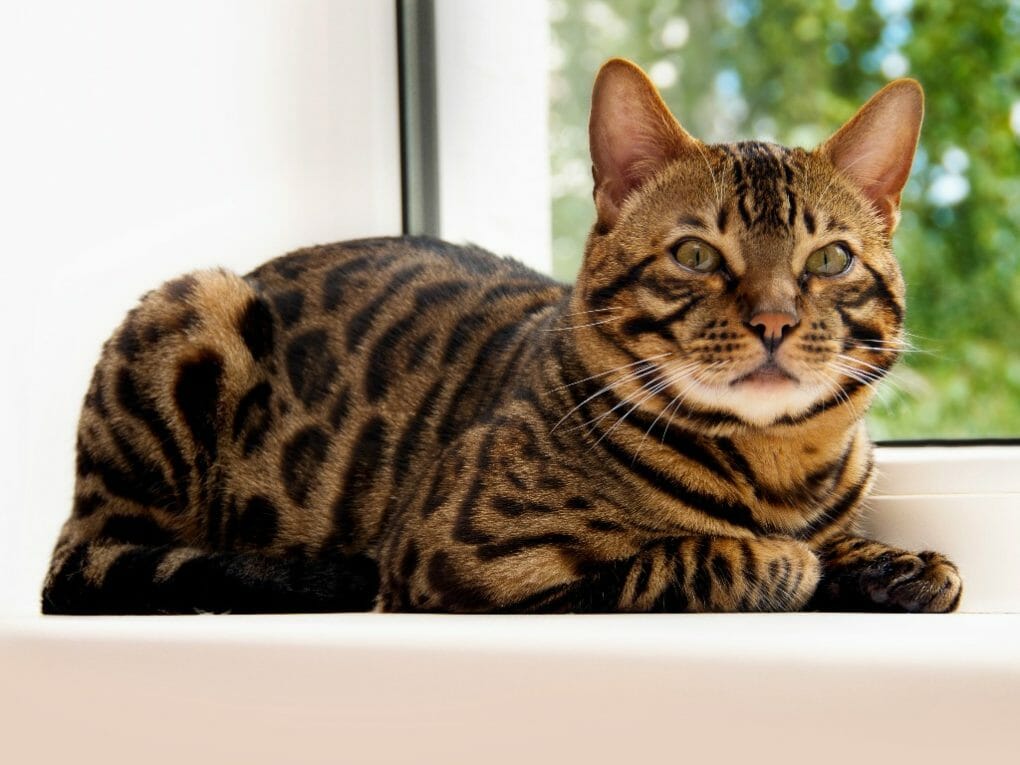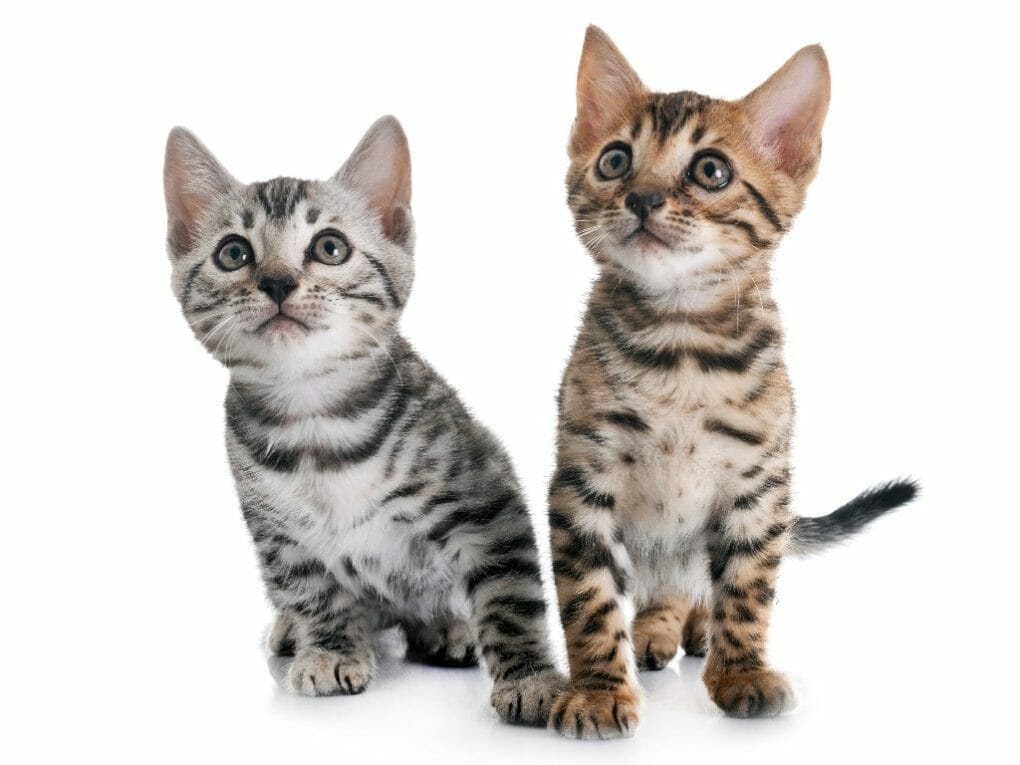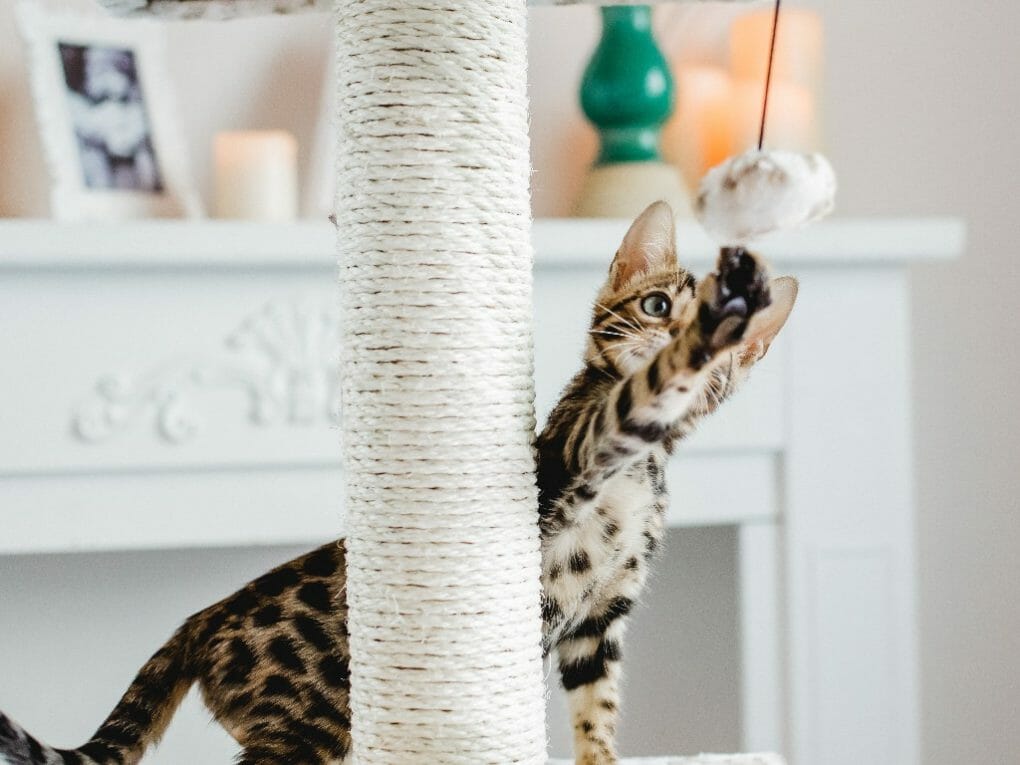Are Bengal Cats Wild: The Characteristics of This Breed and How to Care for It
No, Bengal cats are not wild, but they are a wildcat hybrid. Bengal cats were developed by breeding domestic cats with Asian Leopard Cats (ALCs), which are small, feral cats native to Southeast Asia. As a result, Bengal cats have a unique appearance and several physical and behavioral traits similar to those of their wild ancestors.
They were initially bred to help save small wildcat populations, but today they are domesticated cats bred to be suitable as pets and to live in human homes. They are affectionate and social animals that enjoy being around people and can be trained to perform basic behaviors, such as coming when called or using a scratching post.


Bengal cats tend to be independent and curious. This can sometimes lead to them behaving a little wild. However, if you can provide them with the right environment and stimulation, Bengal cats make great pets. They’re also good with other pets and children and are a good choice for those with cat allergies.
Table of Contents
Characteristics of a Bengal Cat
Weight
A healthy weight for a Bengal cat is around 8 to 15 pounds. They can be playful and energetic. Bengal cat breeds make great family pets as they are active, affectionate, and easy to train.
Length
While there is a range of sizes available for Bengals, it’s important to remember that not all Bengals need large spaces – small apartments or homes can accommodate them just as well! As Bengals grow to be around 8 to 10 inches in height and 14 to 15 inches in length, they’re not too big or small! Bengal cats may seem exotic but are among the most popular house pets.
Coat
The Bengal cat’s coat is usually short to medium in length and can be either smooth or slightly plush in texture. The most striking characteristic of a Bengal cat’s fur is the pattern, which can range from large, dramatic spots to smaller, more refined rosettes. Some Bengals have a marbled pattern.
They may also have white markings on their chest, paws, and underbelly. The color and pattern of a Bengal cat’s coat are determined by genetics and can vary widely from one individual to another.
Colors
The colors of Bengal cats are mesmerizing. As with all cat breeds, Bengal cat colors and the pattern of markings on their coat vary. These special felines have beautiful fur, which can be black, white, orange, brown, etc.
Remember that not all Bengals have colorful patterns – some may have a dark stripe down their back or side. Regardless of your Bengal cat’s color, ensure to take care of it by providing a comfortable environment and plenty of toys and exercise.
They typically have a sweet temperament and love being around people and other animals regardless of fur color. They make great family pets – Bengals are usually very friendly and easy to get along with.


Life Expectancy
The Bengal cat is a breed of domestic cat with flashy colors and personality, making them popular as house pets. They have a life expectancy of 12-16 years, considerably higher than most other breeds of cats.
They are considered one of the easier cats to care for, making them a great choice if you are looking for one that doesn’t require much maintenance.
Breed Status and Requirements
As Bengals need extra care when adjusting to new surroundings, it’s essential to make sure you’re aware of their breeder’s status (if any) and their breeding requirements if you’re purchasing one. The Bengal cat is an attractive feline breed that requires a lot of exercise – they should not be kept inside all the time!
Personality and Behavior
Bengal cats have a lot of personality and behavior, making them fun to be around. They love to play and explore, which means they’re always up for a game of chase or a wrestling match. These cats are also very vocal – Bengals meow frequently! They also enjoy lounging indoors or outdoors – perfect if you live in an apartment or don’t have enough room inside your home for a big cat!
Additionally, Bengal cats are one of the most versatile cat breeds, as they are great for indoor and outdoor living. They’re active and playful, making them great companions for people who want an outdoor cat that isn’t too noisy. They’re also tolerant of other pets and babies, so they’re great candidates for homes with kids.
In addition to being a pet, Bengals make great guards because they’re very vocal when they feel threatened or scared. However, like all domestic cats, they are not typically aggressive by nature and are not trained to protect their home or family. Instead, they will make noise but retreat or hide if they feel threatened or scared rather than defend their territory.
Caring for a Bengal Cat
Bengal cats are affectionate, playful, and easy to care for. They’re perfect for anyone looking for a pet that requires little time or attention. Your Bengal cat will be content and healthy if you provide plenty of toys, scratch posts, and regular brushing.
As with all cats, they are prone to health issues. Be sure to keep their grooming routine regular, as hairballs can quickly occur. Ensure their environment is clean so they don’t get bored or distracted from what’s important (i.e., playing).
Furthermore, provide them with a diet that consists of plenty of fresh vegetables and fruits – this will help keep them healthy and fit! Feed them a balanced diet, as Bengal cats are prone to having some dietary issues due to their high metabolism.
There are several steps you can take to ensure that your Bengal cat is well taken care of:
- Provide good nutrition: It is essential to feed your Bengal cat a high-quality diet that meets its nutritional needs. Choose a premium cat food appropriate for their age, size, and activity level.
- Keep them groomed: Bengal cats shed a lot because they have short, sleek fur.. Regular grooming, such as brushing and bathing, can help keep their coat healthy and shiny.
- Keep their litter box clean: Cats are very particular about their litter boxes, so keeping them clean and fresh is essential. Scoop the litter box daily and wholly empty and refill it once a week.
- Provide plenty of stimulation: Bengals are intelligent and energetic cats that need plenty to keep them happy and healthy. Provide plenty of toys, climbing structures, and interactive play sessions to keep them entertained.


- Keep them up to date on vaccinations: It is vital to keep your Bengal cat up to date on their vaccinations to protect them from preventable diseases. Consult with your veterinarian about the appropriate vaccination schedule for your cat.
- Keep them indoors: Bengal cats are prone to obesity and other health problems if allowed to roam outside, so it is generally best to keep them indoors. Provide opportunities to explore and play inside to keep them happy and healthy.
